Global PC shipments rose 8.1% in the third quarter of 2025, marking the strongest growth in several years and signaling renewed vitality in a market that has struggled since the pandemic-era surge. The gains were driven by businesses and consumers upgrading systems ahead of Microsoft’s October 2025 end-of-support deadline for Windows 10, according to Counterpoint Research.
The approaching cutoff effectively served as a global upgrade cycle. Roughly 40% of all PCs still operate on Windows 10, prompting many organizations to refresh fleets now rather than face security risks later.
Gartner research, which issued a PC market report with findings similar to Counterpoint Research, concurred that Q3 PC growth was driven by the Windows 10 end-of-support (EOS) refresh cycle in most regions. At the same time, “North America’s growth was limited to 1.6% as demand had been accelerated into the first half of the year due to anticipated import tariffs,” said Rishi Padhi, Research Principal at Gartner.
“Conversely, consumer demand remained subdued at the lower price points, impacted by persistent geopolitical and macroeconomic headwinds. Consumers continue to exhibit cautious spending behavior—delaying PC purchases and seeking promotional offers.”
A Consolidated PC Market
Among the major manufacturers, Lenovo led with 17.4% annual growth, followed by Apple at 15%, Asus at 14%, and HP at 10.3%, based on Counterpoint’s figures. Apple and Asus in particular were fueled by strong notebook demand and new product releases. Together, the top five vendors now control nearly three-quarters of global shipments, underscoring an increasingly consolidated marketplace. Smaller original equipment makers, by contrast, saw flat or declining results.
While the replacement rush explains much of the current momentum, analysts note that the next growth wave will likely come from AI PCs, which are systems designed to run on-device artificial intelligence workloads. Qualcomm, Intel, and NVIDIA are preparing specialized processors expected to reach mass production after 2026.
“The industry is also pivoting toward AI PCs with integrated NPUs for enhanced on-device AI capabilities,” Padhi said. Gartner estimates that the AI PC segment will reach 31% in share of shipments in 2025, up from 15% in 2024, “marking a significant shift in market priorities and innovation.”
Still Waiting for Customer Demand
For now, the PC industry’s rebound reflects a mix of practical necessity and strategic positioning. Enterprises are investing in systems capable of handling AI tasks, even if those features aren’t yet critical. The sector’s post-2025 trajectory appears set toward intelligent computing, with this year’s refresh laying the groundwork for that transition.
Yet experts caution that despite optimistic forecast about the growth of AI PCs, these devices remain more of a supply-side innovation than a reflection of customer demand. While vendors tout on-device AI performance and energy efficiency, most users still prioritize reliability and price. Still, the transition signals a longer-term shift toward PCs built to process AI workloads locally, reducing reliance on cloud resources and improving data privacy.
For now, the Windows-driven refresh cycle has given the PC market a welcome reprieve. But once the migration wave subsides, sustained growth will depend on whether AI computing evolves from a marketing term into a tangible productivity gain. The industry’s next challenge, analysts say, will be proving that intelligence, not just new hardware, can power the next decade of computing.

